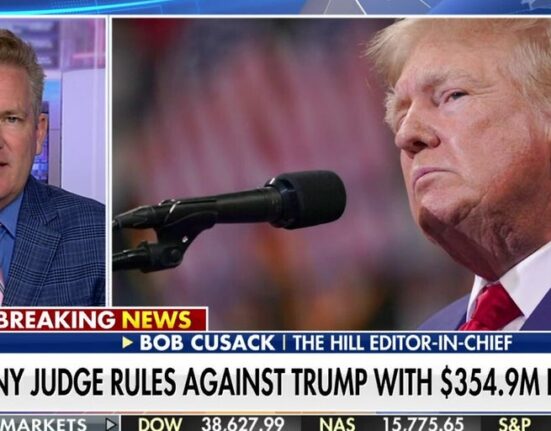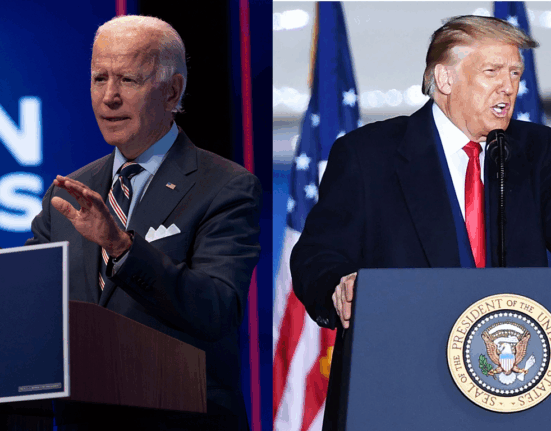[IMPORTANT: Make this 4 times longer with much more detail]
Analysis Trump’s Immigration Orders Will Bring Chaos to the Border Nothing in the history of U.S. border control suggests that the new administration’s approach will be effective. Alden-Edward-foreign-policy-columnist Edward Alden By Edward Alden , a columnist at Foreign Policy , a visiting professor at Western Washington University, and a senior fellow at the Council on Foreign Relations . A Texas service member in a bulletproof vest and helmet is seen from behind as he hauls a handle to open a gate in a metal fence that’s about four times his height. A sign on the fence says “Notice: Authorized personnel only.” A member of the Texas Military Department opens a fence along the U.S.-Mexico border in El Paso, Texas, on Jan. 22. Charly Triballeau/AFP via Getty Images My FP: Follow topics and authors to get straight to what you like. Exclusively for FP subscribers. Subscribe Now | Log In United States January 23, 2025, 3:48 PM Comment icon View Comments ( 6 ) U.S. President Donald Trump took office this week and inherited the most secure southern border in decades, with recorded illegal crossings plummeting over the past year despite a strong U.S. economy that continues to be a magnet for foreign workers. Trump’s Second Term Ongoing reports and analysis So, what did Trump do on day one? He declared a national emergency at the southern border and ripped up most of the Biden administration initiatives that had brought it under control. Amid a slew of executive actions on Trump’s first day, those on immigration stand out. The new president’s approach will bring back the very crisis that he claims he was elected to resolve. U.S. President Donald Trump took office this week and inherited the most secure southern border in decades, with recorded illegal crossings plummeting over the past year despite a strong U.S. economy that continues to be a magnet for foreign workers. Trending Articles Has Technology Really Revolutionized Modern Warfare? How war in the 21st century has—and hasn’t—changed. Powered By Advertisement Has Technology Really Revolutionized Modern Warfare? X Trump’s Second Term Ongoing reports and analysis So, what did Trump do on day one? He declared a national emergency at the southern border and ripped up most of the Biden administration initiatives that had brought it under control. Amid a slew of executive actions on Trump’s first day, those on immigration stand out. The new president’s approach will bring back the very crisis that he claims he was elected to resolve. Some of Trump’s moves are familiar. By declaring an emergency on the border with Mexico, as he did during his first term , the president has ensured that the government can send National Guard and military troops to assist with border enforcement. The Department of Homeland Security also announced that Trump will also restore his first-term “ remain in Mexico ” program, requiring many asylum-seekers to wait in Mexico for their U.S. immigration court hearings. The administration is also shutting down federal refugee resettlement —an orderly program for those fleeing violence and discrimination around the world—just as it largely did the first time around. Other actions may be more far-reaching. Trump invoked Article IV, Section 4 of the U.S. Constitution to assert the power to turn back any foreigner crossing the southern border on the grounds that those entries constitute an “invasion” of the United States. The language is so open-ended that it seemingly gives officials the power to turn away anyone crossing the southern border, legally or illegally. U.S. Customs and Border Protection plans to use that authority to block most asylum-seekers at the southern border on public health grounds, emulating the controversial imposition of Title 42 to reduce entries during the COVID-19 pandemic. The Trump administration also wants to restrict birthright citizenship , which grants U.S. citizenship to any child born on U.S. soil—a likely constitutional violation that was temporarily blocked by a federal judge in Washington state after it was challenged in the courts by two dozen U.S. states and cities. What unites all these measures is a faith in the brute force power of government. If the deterrents—fences, walls, technology, Border Patrol agents, legal bars on asylum claims—are sufficiently harsh and widespread, then illegal crossings can be halted, the thinking goes. But there is nothing in the history of U.S. border control efforts to suggest that such an approach will be effective. The United States began seriously fortifying its southern border in the mid-1990s, but it was not until the 2008 financial crisis and the resulting surge in U.S. unemployment that recorded encounters of illegal crossings slowed significantly. Trump’s first term was revelatory; despite the president implementing harsh border measures—including separating children from their parents—illegal crossings surged in the strong economy of 2019, exceeding the numbers in any year of the preceding Obama administration. It was only with the start of the COVID-19 pandemic in 2020, which brought border closures and spiking unemployment, that illegal crossings again dropped significantly . When he entered office in 2021, former President Joe Biden inherited a border where illegal crossings were rising sharply—and then made it worse by lifting most of the first Trump administration’s deterrent measures, including the “remain in Mexico” policy. The result was an unprecedented surge in border crossings, surpassing the record levels reached in the 1990s and early 2000s. It was an error from which Biden’s presidency would never recover, cementing public perception that his administration had failed to secure the border. Read More A group of police officers await the disembarkation of the 600 migrants in the port of Catania on April 12, 2023 in Catania, Italy. Europe’s Radical Migration Ideas Are Becoming Reality There’s no shortage of obstacles to sending would-be migrants to third countries—but the continent is committed to giving it a try. Analysis | Giovanni Legorano Donald Trump speaks near Coronado National Memorial in Montezuma Pass, Arizona on Aug. 22. Immigration Is the Glue Holding the MAGA Coalition Together Ronald Reagan used anti-communism in the same way, but that story ended unexpectedly. Argument | Julian E. Zelizer Unlike those earlier decades, in which most unauthorized crossings at the southern border were young Mexican immigrants seeking better-paying jobs in the United States, the surge during the Biden administration was global: Venezuelans fleeing civil violence, Haitians fleeing gangs, Cubans escaping repression and a stagnant economy, and even Chinese and Indians in rising numbers all began arriving at the southern border, seeking protection under U.S. asylum laws. While at first overwhelmed by the unprecedented number of crossings, the Biden administration rose to the challenge in its final 18 months. Its adapted approach was a sophisticated combination of sticks and carrots. The administration cracked down on would-be asylum-seekers who illegally crossed into the United States after passing through another country, turning most of them away in a move that drew sharp criticism from immigrant rights advocates. Mexico agreed to cooperate in taking in migrants who could not be deported to their home countries and did more to tighten control of its southern border to reduce the number of people heading for the United States. Sign up for Editors’ Picks A curated selection of FP’s must-read stories. Sign Up By submitting your email, you agree to the Privacy Policy and Terms of Use and to receive email correspondence from us. You may opt out at any time. Enter your email Sign Up ✓ Signed Up You’re on the list! More ways to stay updated on global news: FP Live Enter your email Sign Up ✓ Signed Up World Brief Enter your email Sign Up ✓ Signed Up China Brief Enter your email Sign Up ✓ Signed Up South Asia Brief Enter your email Sign Up ✓ Signed Up Situation Report Enter your email Sign Up ✓ Signed Up View All Newsletters At the same time, Biden greatly expanded the opportunities for legally entering the United States, providing strong incentives to use those pathways. Some 30,000 migrants per month were admitted from Cuba, Haiti, Nicaragua, and Venezuela under an expanded use of the president’s authority to temporarily “parole” migrants into the United States. Similar programs were created for Ukrainians and Afghans. Additionally, a new (and at times glitchy) app, CBP One, was launched to permit asylum-seekers to make appointments at legal crossings. And the United States began working more closely with other countries to offer refugee processing that would allow migrants to fly directly to the United States, avoiding the long and dangerous journey through Mexico. The results were impressive. Illegal crossings plummeted at the southern border; by late last year, the number of people illegally entering the United States from the four countries in the parole program had fallen by 98 percent . The new legal arrivals, along with a broader post-COVID-19 surge in immigration, gave an economic boost to the United States, filling labor shortages and helping to keep a lid on inflation. Now, Trump has torn down most of that work in a matter of days. Would-be asylum-seekers who followed the law and applied to make their claims at the proper ports of entry were left stranded on Monday when the new administration shut down the CBP One program. Some 270,000 people have had their appointment requests canceled . The president also ended the temporary parole programs for Cubans, Haitians, Nicaraguans, and Venezuelans—and those who arrived during the Biden years are now likely targets for deportation. These draconian initiatives to shut down legal migration routes underscore a truth that Trump never shared with voters during the 2024 campaign but was obvious in his first-term actions: He dislikes legal migration just as much as illegal migration. The president’s goal is less about securing the southern border than it is about sharply reducing the overall number of migrants to the United States. Unless Trump gets lucky with another pandemic that tanks the economy and closes the borders, his tactics are certain to backfire this time. There may be a hiatus while would-be migrants and smugglers monitor the new administration’s actions and probe for weaknesses. But with the legal routes introduced under Biden now closed, illegal migration will surge again. Desperate people and the gangs that exploit them will seek every route over, under, and around the barriers that Trump puts in place. Biden’s success in the second half of his term provides a clear lesson: Complex problems require complex solutions. By working with governments in the region, expanding legal pathways into the United States, and turning back those who cross illegally, Biden created the most secure southern border that the United States has seen since the surge in unauthorized migration began in the 1970s. Trump could have built on those efforts. Instead, his second administration—and the whole United States—will face yet another bout of chaos and violence on the border, with horrific costs for desperate migrants and their families. That’s exactly the way that Trump wants it. This post is part of FP’s ongoing coverage of the Trump administration . Follow along here . Edward Alden is a columnist at Foreign Policy , the Ross distinguished visiting professor at Western Washington University, a senior fellow at the Council on Foreign Relations, and the author of When the World Closed Its Doors: The Covid-19 Tragedy and the Future of Borders and Failure to Adjust: How Americans Got Left Behind in the Global Economy. X: @edwardalden Read More On Donald Trump | Mexico | Migration and Immigration | United States Join the Conversation Commenting on this and other recent articles is just one benefit of a Foreign Policy subscription. Already a subscriber? Log In . Subscribe Subscribe View 6 Comments Join the Conversation Join the conversation on this and other recent Foreign Policy articles when you subscribe now. Subscribe Subscribe Not your account? Log out View 6 Comments Join the Conversation Please follow our comment guidelines , stay on topic, and be civil, courteous, and respectful of others’ beliefs. You are commenting as . Change your username | Log out Change your username: Username I agree to abide by FP’s comment guidelines . (Required) Confirm CANCEL Confirm your username to get started. The default username below has been generated using the first name and last initial on your FP subscriber account. Usernames may be updated at any time and must not contain inappropriate or offensive language. Username I agree to abide by FP’s comment guidelines . (Required) Confirm









Leave feedback about this